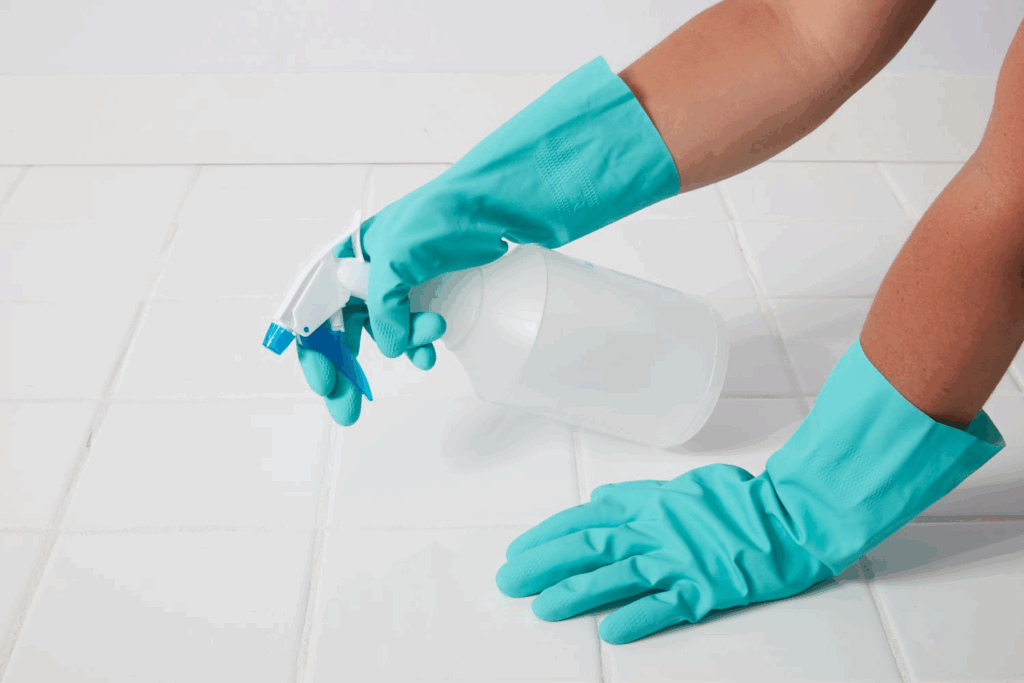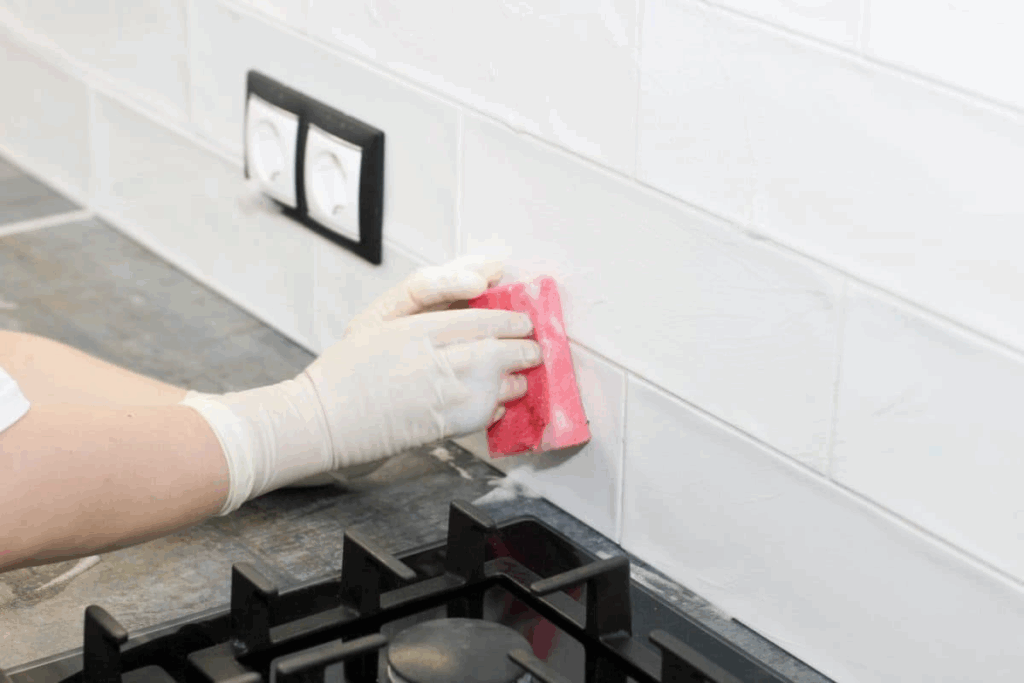Kitchen tiles are a practical and stylish choice for any cooking space, offering both beauty and functionality. From sleek subway tiles to rustic ceramics and glossy porcelain finishes, kitchen tile surfaces can withstand daily wear and tear—if they’re properly maintained. Caring for your kitchen tile not only keeps your space looking clean and inviting but also extends the lifespan of the materials, preventing stains and enhancing overall durability.
Here’s how you can take care of your kitchen tiles the right way.

- Daily Cleaning for Long-Term Shine
One of the simplest and most effective ways to protect your kitchen tile is by cleaning it regularly. Daily maintenance prevents grime, oil splatter, and food particles from building up and causing damage over time. A quick wipe-down with a soft cloth or mop and a mild detergent is often all it takes.
Avoid using harsh chemicals or abrasive scrubbers, as these can scratch the tile surface or wear down any protective coating. Instead, use a gentle, pH-neutral cleaner. For a natural solution, a mix of warm water and white vinegar works well on most tile types.
- Seal the Grout—and Reapply as Needed
Even if your kitchen tile is stain-resistant, the grout between tiles is usually more porous and prone to discoloration. Over time, grout can absorb moisture, grease, and food residue, leading to unsightly stains or even mold growth.
To prevent this, apply a grout sealer every 6 to 12 months. Sealing helps to create a barrier against moisture and staining agents, making clean-up easier and extending the life of the grout lines. When applying the sealer, ensure the grout is clean and dry, and use a small brush or applicator to reach every crevice.
- Handle Spills Promptly
Kitchen spills are inevitable, but letting them sit too long can cause permanent stains—especially with porous materials like natural stone or unsealed grout. Whether it’s coffee, wine, tomato sauce, or oil, clean up spills as soon as they happen.
Use an absorbent cloth or paper towel to blot (not scrub) the mess, then wipe the area clean with warm water and a mild cleaning solution. Prompt action will protect both the tile surface and the grout from long-term damage.
- Prevent Scratches and Chips
While kitchen tile is durable, it’s not indestructible. Dropping heavy cookware, dragging furniture, or using harsh scrubbers can lead to cracks or chips in the tile. To minimize risk, consider the following tips:
Use mats or rugs in high-traffic areas and under sinks.
Install felt pads on the bottoms of chairs and tables.
Avoid dropping sharp or heavy objects onto tile surfaces.
If a tile does crack or chip, repair it quickly to prevent the damage from spreading or moisture from seeping underneath.
- Deep Clean Seasonally
Along with daily care, seasonal deep cleaning is essential for keeping your kitchen tile looking its best. This process helps to remove built-up dirt and grease that may not come off during routine cleaning.
For a deep clean:
Mix baking soda and water into a paste and gently scrub the tile and grout with a soft brush.
Rinse with warm water and dry thoroughly.
For stubborn grout stains, use a specialized grout cleaner or a steam cleaner for a more thorough clean.
A deep clean every 3 to 4 months can revive the look of your kitchen tiles and help you spot any early signs of wear.
- Use the Right Products for Your Tile Type
Different types of kitchen tile require different care. For example, ceramic and porcelain tiles are fairly low maintenance, while natural stone tiles like marble, slate, or travertine need more specialized products to avoid damage.
Always check the manufacturer’s recommendations for cleaning and sealing based on the type of tile you have. Using the wrong product can dull the finish or cause etching, especially on sensitive surfaces.

- Enhancing Durability Through Routine Maintenance
Ultimately, a little routine maintenance goes a long way in enhancing the durability of your kitchen tile. By keeping surfaces clean, sealing grout, and addressing issues like cracks and stains promptly, you ensure that your tile remains a resilient and attractive feature of your kitchen for years to come.
Whether you’re working with ceramic, stone, or glass tile, consistent care is the key to maximizing its value and appearance.
Kitchen tiles are both a design element and a functional surface that face a lot of wear from daily cooking, cleaning, and foot traffic. By taking simple but effective steps to prevent stains and enhance durability, you can maintain the beauty and integrity of your kitchen tile for the long haul. With regular cleaning, proper sealing, and prompt repairs, your tiles will continue to shine—making your kitchen a welcoming and efficient space for every meal.